Step-by-step technology for growing zucchini in a greenhouse: we follow the rules and enjoy the result
Biologically speaking, squash is a type of pumpkin. The vegetable is rich in vitamins A, E, C, vitamins B and PP, mineral salts and microelements. Wherein squash - just a godsend for those who follow the figure, because it contains only 23 kcal per 100 g.
This common and unpretentious garden crop is cultivated in almost every garden plot. But few people grow zucchini indoors. But in vain. This method gives a solid increase in the yield of useful fruits and accelerates ripening. The material will focus on the intricacies of growing zucchini in a greenhouse and in a greenhouse.
The content of the article
Zucchini in a greenhouse: construction requirements
Growing and caring for zucchini in a greenhouse is not much different from cultivation of crops in the open field. However, it is necessary to take into account some peculiarities.
The main thing is the need for regular ventilation to maintain an optimal microclimate inside. For full air circulation, greenhouses and hotbeds are equipped with vents.
Modern polycarbonate greenhouses and conventional film shelters are suitable for growing crops in greenhouses. For growing zucchini in winter, more solid buildings with heating, glazing and a foundation are used. For heating the winter greenhouse, special furnaces and electric boilers are used.
Zucchini varieties recommended for greenhouses
If the greenhouse is small, then early ripe compact varieties of culture are chosen for planting. They do not grow too much, are distinguished by high yield rates and an excellent delicate taste.
Interesting fact. Not only the fruits are edible, but also the flowers of the squash. In southern Europe, they are fried, baked, soups and added to salads.
The varieties recommended for planting in greenhouses include Roller, Anchor, the hybrid variety Belogor, and varieties zucchini like Zebra and Tsukesha. Let's tell you more about them:
- Belogor Is a high-yielding early ripening variety with medium-sized fruits. Differs in dense tender pulp. Suitable for fresh food and canning.
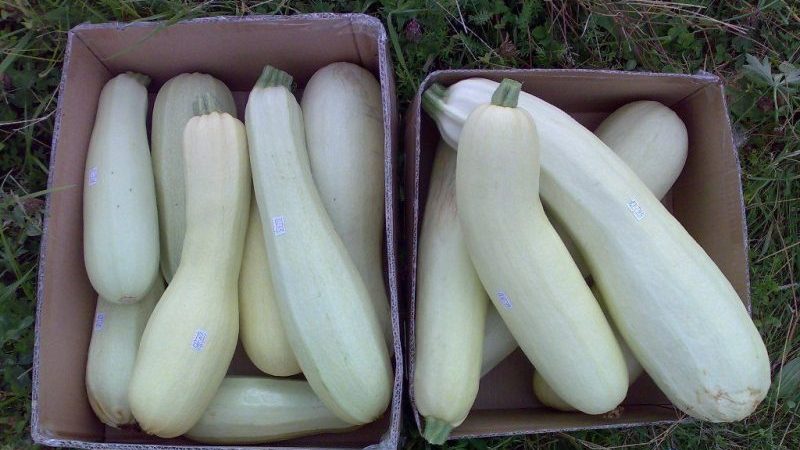
- Roller - bush culture. The average weight of the fruit is 1 kg. The pulp is loose and juicy. The variety is resistant to temperature extremes.
- Anchor - bush variety. Compact plants with shortened internodes. The crust is thin. The pulp is light yellow, firm, tender. The fruits removed from the garden are stored for no more than 30 days.
- Zebra. This variety owes its name to the color of the fruit (alternating light and dark green stripes). Perfect for canning.
- Tsukesha - another bush variety. Feature - white spots on the leaves. Fruits are elongated, weighing up to 900 g. The bark is thin, the pulp is juicy, with an excellent taste.
Season selection and temperature conditions
Under cover, squash is grown all year round. Considering that the harvest harvested from open ground in the fall is perfectly stored for 2-3 months, in winter, zucchini begin to grow in mid-winter - early spring. During this period, there are already few fresh vegetables in the diet, and vitamin fruits will come in handy.Growing zucchini in greenhouse conditions is a good option for a family business.
They begin to grow a culture by planting seeds for seedlings. The best time is the beginning of March: proper plant care will allow you to harvest an early harvest of delicate vitamin fruits in April.
When cultivating in a greenhouse / greenhouse, maintain a constant temperature. During the day at + 23 ° C, and at night the air should not be cooled below +14. The soil in the structure is also well warmed up to + 20 ... + 25 ° C.
Growing zucchini in a polycarbonate greenhouse
Growing squash in greenhouses is not a troublesome process. But it also has its own characteristics. The harvest will please only in the case of properly prepared soil, competent plant care, maintaining an optimal microclimate in a polycarbonate greenhouse.
Council. Like any other vegetable crop, zucchini do not like to grow in the same place for several years in a row. Therefore, planting alternates with bulbous, cabbage, legumes, carrots, tomatoes, potatoes.
Step 1. Preparing the soil
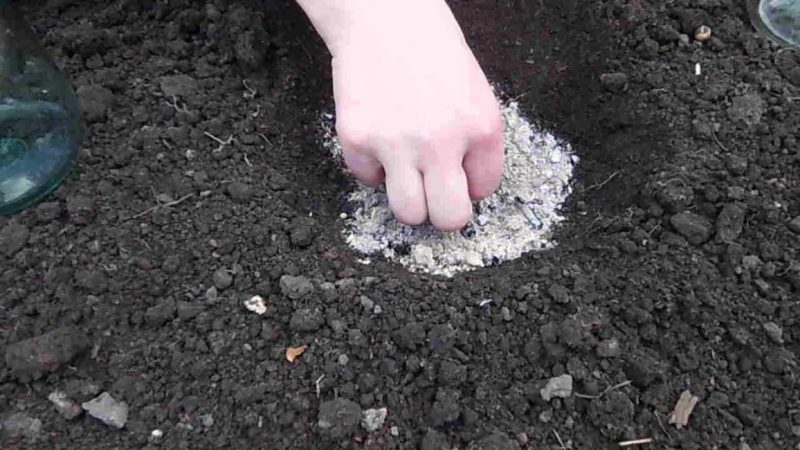
The squash culture loves "biofuels". Natural warmth warms up the soil and the plant root system well. It is also an excellent top dressing that improves the growth of young plants. Preparing a warm bed for a greenhouse or greenhouse is not difficult.
For this you will need:
- rotted mullein or pig manure;
- straw.
To obtain a nutrient mixture, mullein is mixed with straw in equal proportions. It is well watered with warm water, covered with foil and left like that for several days.
The resulting mixture is laid evenly in the base of the garden... A layer of nutritious soil is poured on top and seedlings are placed. This "biofuel" emits carbon dioxide, which heats the soil and the root system of the bush. On a warm bed, plants grow faster, set fruit better and ripen faster.
Step 2. Preparing seeds and embedding them in the substrate
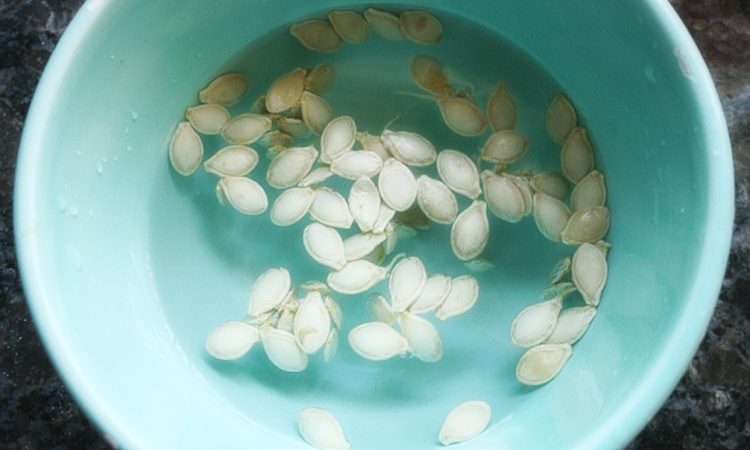
The key to getting an early harvest is a thorough preparation of seed material. First, the seeds are carefully examined. Damaged specimens and seeds with signs of disease are removed.
Then zucchini seeds are soaked, disinfected, germinated and hardened. Soaking will help detect empty seeds (they will float when immersed in water). Disinfection will protect young plants from disease. Germination will allow you to get earlier and more friendly shoots. The procedure is carried out by wrapping the seeds in a damp cloth or in wet sawdust.
For hardening, the sunken seeds are transferred to the lower shelf of the refrigerator. After 2-3 days, they take it out of the refrigerator and start planting.
Prepared holes are pre-watered with warm water... Seeds are buried in the ground to a depth of no more than 7 cm. Sprinkle with soil on top. A distance of about 70 cm is maintained between the plants.
Growing through seedlings will help to get the finished product at an earlier date. It is better to plant seeds in individual pots or cups at least 10 × 10 cm in size. A nutrient mixture of peat and humus (in equal proportions) is used as soil, you can add a little sawdust.
When preparing the soil mixture, wood ash (half a glass per bucket) and ammonium nitrate (6-5 g per bucket) are added as fertilizer. The seedling containers are filled with soil, moistened with warm, settled water and the seeds are sealed to a depth of 3-4 cm.
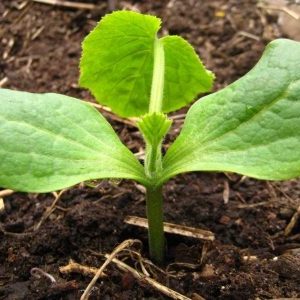
Step 3. Care of seedlings
Seedlings appear in 4-5 days. Further care of the seedlings consists in regular watering and fertilization.
Young plants are watered about once a week, making sure that the soil does not dry out. Top dressing is applied two times. The first one is right after the sprouts appear. The second time was two weeks later. It is good to use ready-made complex fertilizers, for example, "Bud" or "Agricola".
Important... Squash seedlings need a lot of light. With a lack of sun, the plants will stretch out strongly and will be weak.
Step 4. Planting seedlings to a permanent place
The grown bushes are planted in prepared beds after the soil in the greenhouse has warmed up enough (up to + 20 ° C). Plants are removed from containers along with an earthen clod, planted in prepared holes and watered. The seedlings are deepened to the cotyledonous leaves.
Disembarkation is carried out in the morning, in cloudy, warm weather. So the plants will take root faster. The next day, the soil is loosened.
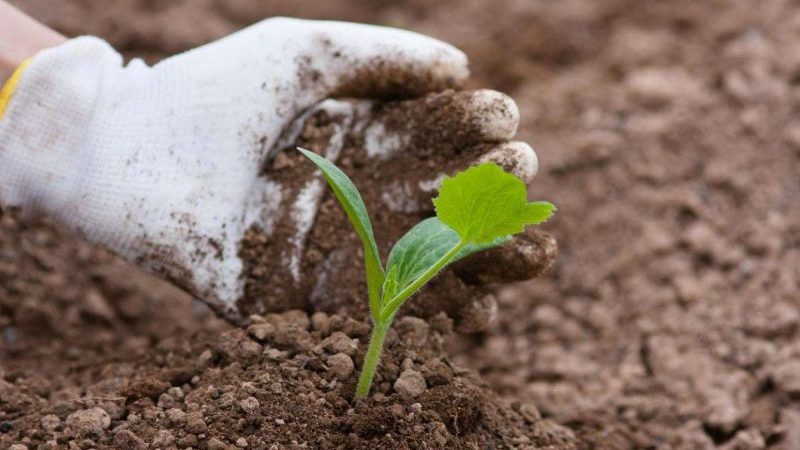
Step 5. Watering and fertilizing
Zucchini beds are watered regularly, but not too often. It is enough to moisten the soil well once every 10 days. Watered with warm, settled water at the rate of 10 liters of water per 1 m².
How to feed during flowering and fruiting? To do this, use mullein infusion or ready-made compositions intended for zucchini. Fertilizers are applied twice. The first is after the beginning of flowering. The second time was three weeks later. Top dressing increases yields, so you should not neglect it.
Step 6. Pollination of the culture
With the arrival of natural heat, the greenhouse or greenhouse with zucchini is aired for most of the day. For better pollination of flowers and attracting insects, plantings are sprayed with sugar syrup or honey dissolved in water.
If this was not enough, then the plants are manually pollinated. To do this, pollen is carefully transferred from male flowers to female flowers using a cotton swab.
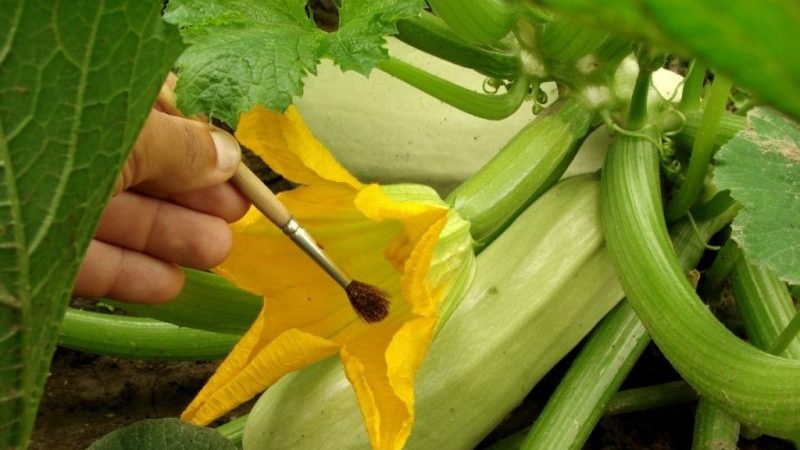
Step 7. Prevention and treatment of diseases
In greenhouse conditions, squash is better protected from pests and diseases. To prevent diseases, plantings are sprinkled with wood ash.
The culture is susceptible to anthracnose, ascochitosis, bacteriosis, - diseases that develop when grown in an excessively humid environment. For the purpose of prevention, water the plantings in the evening, avoiding waterlogging. If signs of infection appear, immediately treat the zucchini with Trichodermin.
It is also good to use modern non-toxic products such as "Narcissus", "Zircon" or "Amulet".
Problems when growing zucchini in a greenhouse arise due to a violation of the optimal microclimate inside the building, non-compliance with the rules for watering and fertilizing.
The squash culture does not like it when it is too hot and humid in a greenhouse or greenhouse. The optimum temperature is + 24-25 ° C during the daytime and +18 ° C at night. If it's too hot in the greenhouse, the zucchini will shed their ovaries.
Air humidity is maintained at 60–70%. To ensure that the moisture content in the air does not exceed the permissible limits, the greenhouse is regularly ventilated.
It is also important to follow the rules for watering squash beds. Excess moisture is detrimental to plants, as it leads to the appearance of rot.
Attention! Watering squash beds in a greenhouse with cold water provokes the development of diseases.
How to water zucchini correctly? Plants are abundantly moistened once every 7-10 days with warm, settled water.
Sometimes it happens that squash bushes delight the eye with lush bright green foliage, and the fruits are not tied. This means that the plants have received too much nutrients and are now fattening. When applying fertilizers, it is important to observe the recommended dosages.
Step 8. Harvesting
The first harvest of young juicy vegetables is harvested 35–45 days after planting the seedlings. Cultures intended for long-term storage mature a little longer.
Delicate fruits are suitable for consumption as early as three weeks after flowering. They are used fresh in salads instead of cucumbers.
The ripeness of the fruit is determined by the crust that is firm to the touch. When tapping on ripe fruits, a dull sound is heard. Vegetables intended for storage are removed from the bush along with the stalk. In a cool, dry place, zucchini can be stored well for 3-4 months.
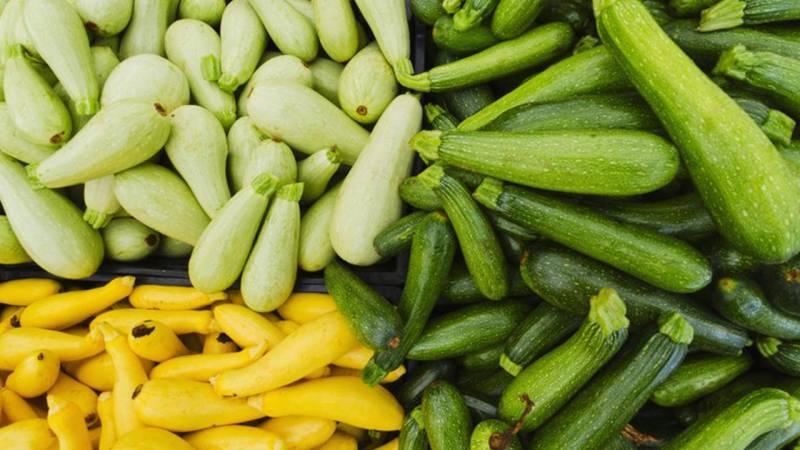
Benefits of greenhouse cultivation
Why occupy a valuable place in a greenhouse with such an unpretentious culture as a marrow? Yes, this vegetable does not require special conditions, is unpretentious and feels great in the open field. However, cultivation of vitamin fruits in a greenhouse or in a greenhouse has several advantages:
- fruits reach technical ripeness faster, while the yield increases;
- vegetables delight with a more delicate, rich taste;
- the best results are obtained by using hybrids designed specifically for greenhouse conditions;
- early zucchini sell well;
- vegetables are less likely to get sick and are affected by pests;
- zucchini in a greenhouse requires minimal maintenance.
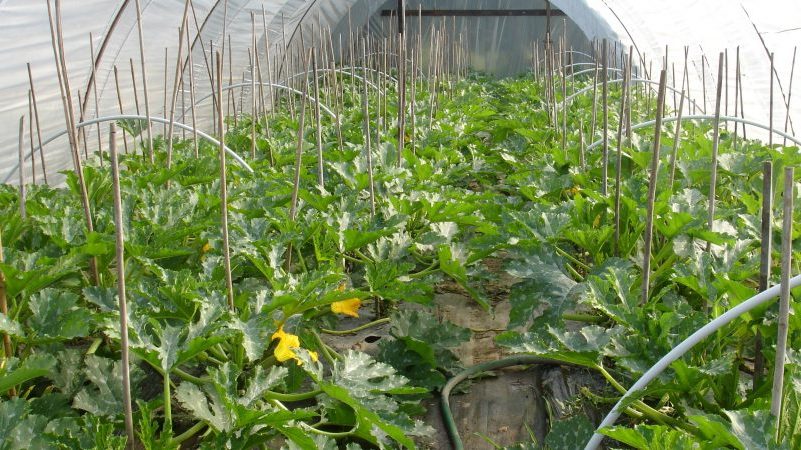
Secrets of a good harvest
To grow a good harvest on squash beds, it is enough to adhere to simple rules:
- to carry out manual pollination of female flowers (insects will not always help in greenhouse conditions);
- follow the rules of crop rotation (do not plant zucchini in the same place from year to year);
- do not place zucchini next to the pumpkin (cross-pollination reduces yield);
- provide plants with adequate lighting and warmth;
- use high-quality seed material;
- apply fertilizers in a timely manner and observe the measure - excessive feeding will lead to fattening and the fruits will not be tied.
Read also:
How to cook canned zucchini for the winter.
How to cook pickled zucchini for the winter without sterilization.
Conclusion
Growing squash in a greenhouse or polycarbonate greenhouse will provide you with an early harvest of tasty and healthy vegetables. The harvested fruits can be eaten fresh, used for canning, or sold, making marrow growing a family business.